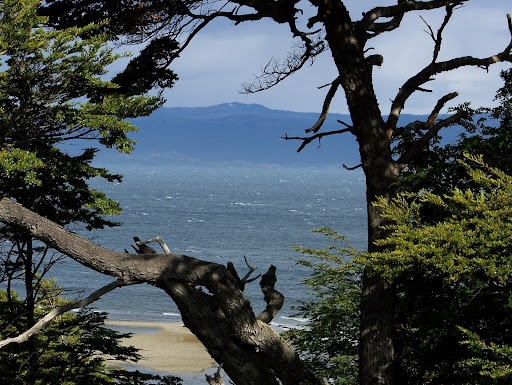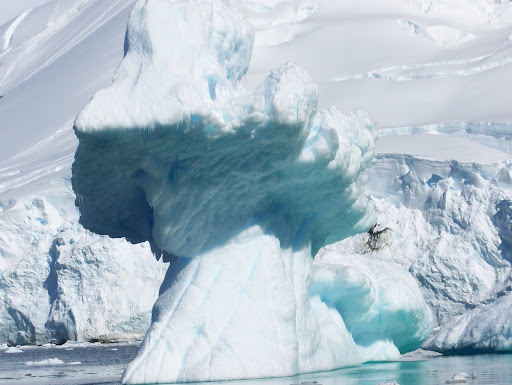
If you're interested in learning more about this amazing land, click here, here, and here.
I thank you for checking out this blog.
Sharing experiences on the white continent.

If you're interested in learning more about this amazing land, click here, here, and here.


 Prior to embarking on this voyage, I think the thing I most anticipated was the possibility of seeing some whales. I had never had that experience before, so I was hoping that I would be able to see whether whale-watching lived up to the hype.
Prior to embarking on this voyage, I think the thing I most anticipated was the possibility of seeing some whales. I had never had that experience before, so I was hoping that I would be able to see whether whale-watching lived up to the hype.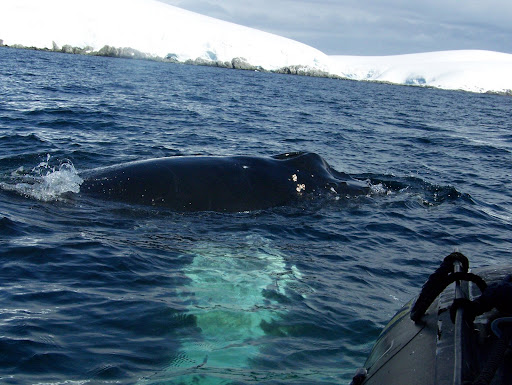


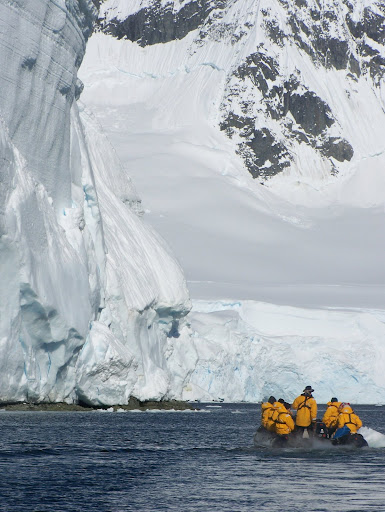 Zodiacs are the rubber boats we used as a tether to the continent. I developed a great fondness for them as they were versatile, safe, and a lot of fun. They enabled us to access places that would otherwise be impossible for us to see, and that meant entering icy channels and chasing whales, and a multitude of other spectacular locales.
Zodiacs are the rubber boats we used as a tether to the continent. I developed a great fondness for them as they were versatile, safe, and a lot of fun. They enabled us to access places that would otherwise be impossible for us to see, and that meant entering icy channels and chasing whales, and a multitude of other spectacular locales.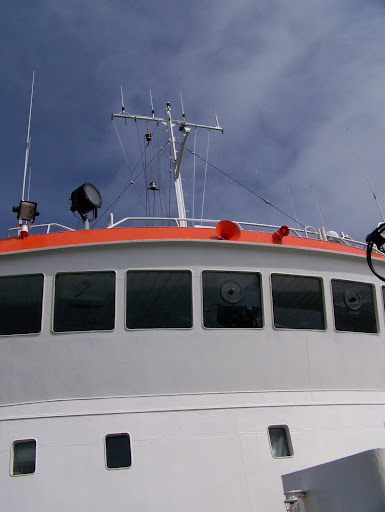
A day on the Multanovskiy usually began with Martin, our sometimes overly-enthusiastic expedition leader from Sweden, awakening us on the intercom system around 6:00 AM to inform us that coffee would begin in thirty minutes and breakfast in an hour. And then he would let us know that there was a glorious bird flying near the ship and that we all should make our way to the bridge to see the bird.
It was really a strange way to wake up, but being the good yanqui, I usually felt compelled to hurry up and get dressed to see the bird that Martin was so excited about.
Meals were always an interesting time, as you never knew with whom you would end up eating. The other passengers were a pretty diverse lot in terms of nationality, and I remember some of my best dinners were spent conversing with Swedes, Australians, or Brits. This group consisted of hard-core travellers, so it was usually a lot of fun to hear stories of people's adventures throughout the world.
One thing you NEVER wanted to do on the ship was to ever piss off the Russians. They were sticklers for rules and would sometimes scold you if you did anything wrong. I developed a secret fear of one of the women who worked in the kitchen; she was furious with me one day when I asked for breakfast two or three minutes late. I never asked for any special favors again.
After breakfast, we would usually get ready for a landing or Zodiac cruise which were the times I enjoyed more than I can express. We left the ship two or three times a day, so it seemed we were always putting on or taking off our yellow parkas and snowpants. But having the ability to land was well worth the effort. We averaged about three landings a day.
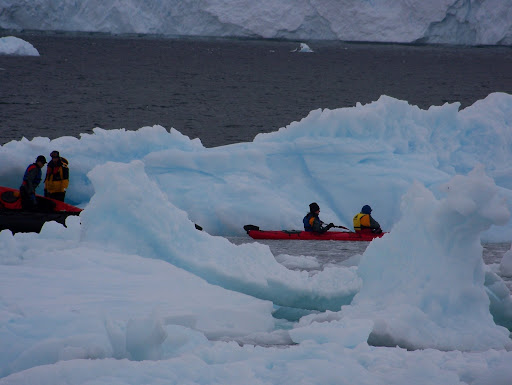 Before departing, I chose to participate in the sea-kayaking option. It sounded like a lot of fun to paddle around the Antarctic waters. The only problem was that my previous sea-kayaking experience was nonexistent, so my first paddle was more than challenging. But I did persist and had a successful paddle or two among the icebergs.
Before departing, I chose to participate in the sea-kayaking option. It sounded like a lot of fun to paddle around the Antarctic waters. The only problem was that my previous sea-kayaking experience was nonexistent, so my first paddle was more than challenging. But I did persist and had a successful paddle or two among the icebergs.  One of our early landings was at a place called Deception Island, a land mass that was formed by an underwater volcano that was the sight of whaling station until an eruption in the 1960s that destroyed the place. Now it's nothing but ruins and black sand beaches.
One of our early landings was at a place called Deception Island, a land mass that was formed by an underwater volcano that was the sight of whaling station until an eruption in the 1960s that destroyed the place. Now it's nothing but ruins and black sand beaches.

The unavoidable element of wildlife in Antartica is the penguins. It seemed that at every stop we made, those funny birds were there on the beach to welcome us to their towns. If they were troubled by our presence, they certainly didn't let on, as they continued to go about their business of gathering stones for their nests, caring for their eggs, or just standing there and observing.
While they are awkward on land, when swimming they are as graceful as any animal you've ever seen. They certainly seem far better adapted to the water than they are the land. While on the ship, I smiled every time I saw a group of them surfacing and briefly diving into the air, much like dolphins.


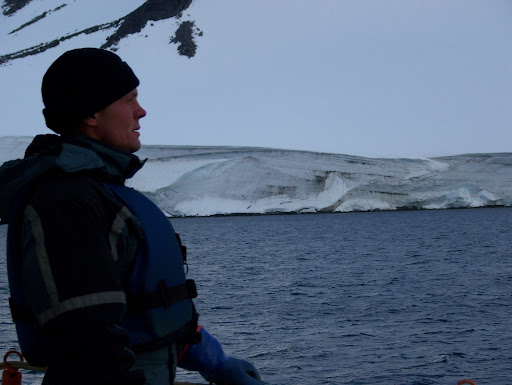

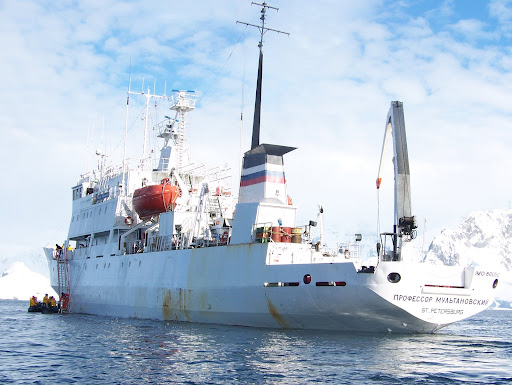 After seeing Ushuaia and its environs, we were finally allowed to board our ship, Quark Expeditions' Professor Multanovskiy , a vessel that was built by the Finns for the Russians during the end of the Cold War, but has now been refurbished for polar expeditions.
After seeing Ushuaia and its environs, we were finally allowed to board our ship, Quark Expeditions' Professor Multanovskiy , a vessel that was built by the Finns for the Russians during the end of the Cold War, but has now been refurbished for polar expeditions. Early on, perhaps when we were still sailing out of the Beagle Channel, we were required to endure an evacuation exercise in which we all got inside the "life boat," or as I prefer to call it, the "escape pod." We were instructed how to enter the pod, that there was enough food inside for 35 of us to last for three days, and how to "live" inside the pod.
Early on, perhaps when we were still sailing out of the Beagle Channel, we were required to endure an evacuation exercise in which we all got inside the "life boat," or as I prefer to call it, the "escape pod." We were instructed how to enter the pod, that there was enough food inside for 35 of us to last for three days, and how to "live" inside the pod.
The only problem with the drill was that the Russian subcaptain who was the leader of my pod, appeared to be just a little drunk as his eyes were red and he stunk of vodka. The smell of vodka doesn't do a lot to inspire confidence among passengers contemplating death at the hands of an angry sea. I was more than a little relieved when we were able to escape the escape pod.
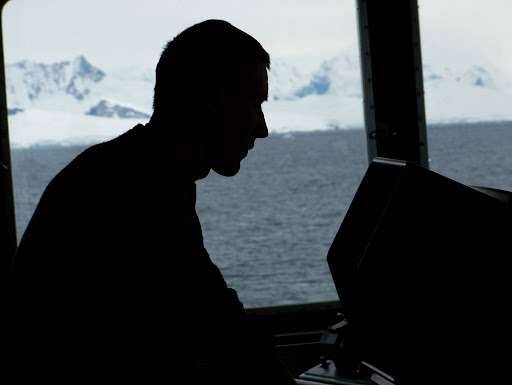 One thing I really enjoyed doing was visiting the ship's bridge, which is something we were encouraged to do. On the bridge, we were able to observe the captain and his crew navigating the waters and making decisions about where exactly the Multanovskiy was going to go on any given day based on the weather, ocean conditions and the likelihood of being able to observe wildlife.
One thing I really enjoyed doing was visiting the ship's bridge, which is something we were encouraged to do. On the bridge, we were able to observe the captain and his crew navigating the waters and making decisions about where exactly the Multanovskiy was going to go on any given day based on the weather, ocean conditions and the likelihood of being able to observe wildlife.
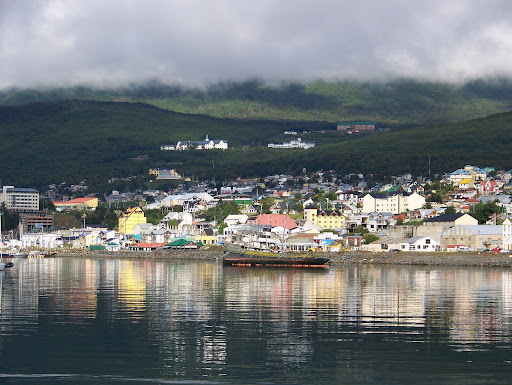 The journey starts in Ushuaia, Tierra del Fuego, Argentina, the southernmost city in the world. Argentines, well, people from Buenos Aires complain that while Ushuaia is in a beautiful location, that the town has little to offer. I didn't find that to be my experience at all as the town offers a sort of Alpine ambience and it is full of touristy shops and restaurants that specialize in Argentine asado (barbeque) and Fuegian lamb.
The journey starts in Ushuaia, Tierra del Fuego, Argentina, the southernmost city in the world. Argentines, well, people from Buenos Aires complain that while Ushuaia is in a beautiful location, that the town has little to offer. I didn't find that to be my experience at all as the town offers a sort of Alpine ambience and it is full of touristy shops and restaurants that specialize in Argentine asado (barbeque) and Fuegian lamb.